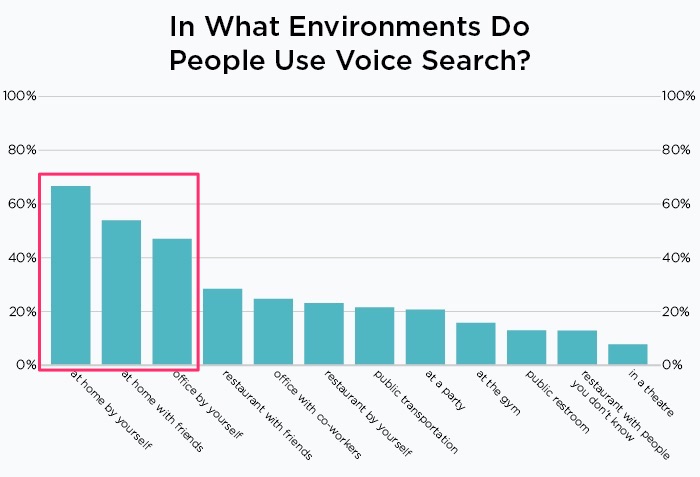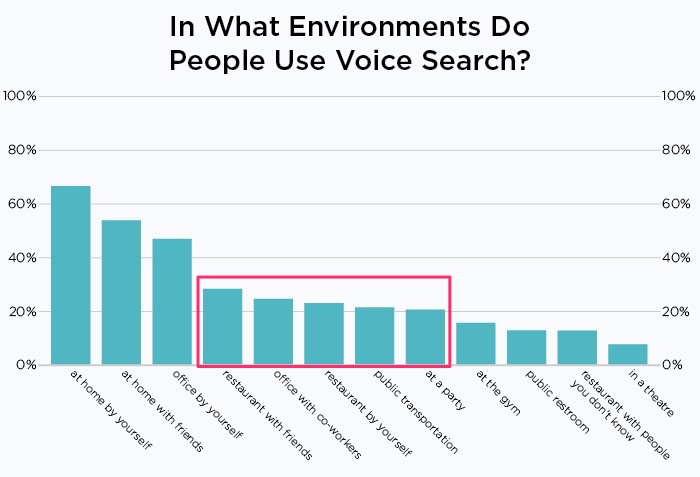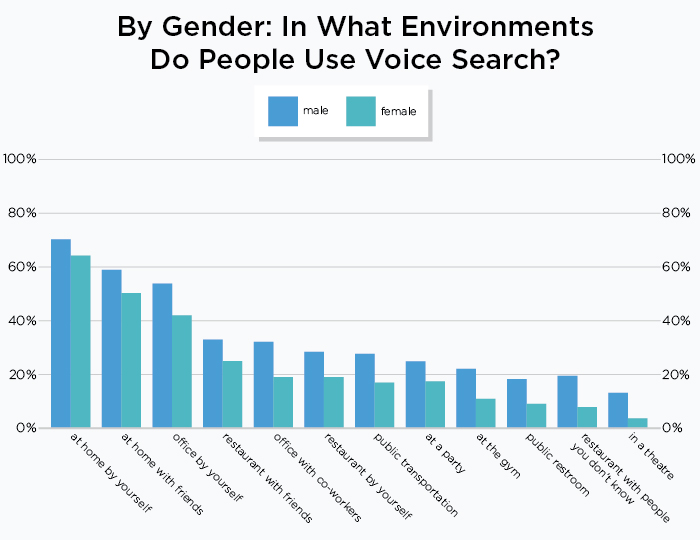It’s getting easier all the time to do the things we want to do with our smartphones by talking to them, instead of typing in commands. But how comfortable are people with using voice commands, especially out in public?
In this episode of our popular Here’s Why digital marketing video series, Perficient Digital’s Mark Traphagen asks Eric Enge to share some of the results of a recent survey he did of over 900 smartphone users.
Don’t miss a single episode of Here’s Why. Click the subscribe button below to be notified via email each time a new video is published.
Resources
- 31 Must Know Stats About the Continuing Growth of Voice Commands with Smartphones
- See all of our Here’s Why Videos | Subscribe to our YouTube Channel
Transcript
Mark: Eric, recently we conducted a survey of over 900 smartphone users in the U.S. And when you looked at the results, you found some interesting things about how they interact with their smartphones. In particular, I know you looked at voice commands. This is when somebody talks to their phone to start an app, or start a phone call, or do a search, right? So instead of typing in the commands, they talk. They speak right to their phone. Well, share a few of the things that you found out in that survey.
Eric: Sure. When we gave people a series of situations and asked them if they felt comfortable using voice commands, it wasn’t surprising that respondents felt most comfortable doing this in private. As you can see in this graph, between 40% and 60% are okay with using voice commands with their phones at home or in the office if they are alone.

And just over 50% will even use them at home with friends and family around. What was surprising though was that over one-fifth of those surveyed were fine with using voice commands in more public situations, such as in an office with coworkers, in a restaurant, on public transportation, or at a party.
 [Tweet “Over 20% of smartphone users are comfortable giving voice commands to their phones in public. More at”]
[Tweet “Over 20% of smartphone users are comfortable giving voice commands to their phones in public. More at”]
Mark: While those who are comfortable addressing their phones out loud in public are still a minority, it’s still more people than we thought might do that, right?
Eric: Exactly. And I believe this number is growing.
Mark: It’s becoming more socially acceptable to express a query or a command to your phone in public, you think?
Eric: Sure. Remember when Bluetooth earpieces first came out? At first, it seemed really weird and awkward to walk down the street talking to someone on your phone with no phone visible. But now, as soon as we see that earpiece, we realize that the person isn’t crazy, they’re just on the phone, and we don’t give it another thought.
Mark: Any other interesting findings from the survey?
Eric: Sure. Take a look at this graph.

In every situation we asked about, men felt more comfortable using voice commands than women. But as you move to the right, the situations become more and more public and more of the kinds of places where talking out loud is usually frowned upon, such as a public restroom or a theater. In these situations, men were significantly more likely to be okay using voice commands, sometimes two to three times more likely than women.
[Tweet “Men are more likely to use voice commands with their phones than women, especially in public. More at”]
Mark: How about age? Does our generation affect how comfortable we are with using smartphone commands?
Eric: Yes, it does. For example, we found that people under 24 were 33% more likely to use voice commands in public than people older than 24.
Mark: Some really interesting findings, Eric, and I know there is a lot more in our study published on our blog. Viewers can follow this link to the study: 31 Must Know Stats About the Continuing Growth of Voice Commands with Smartphones, where they’ll also learn some things about voice commands, how the usage breaks down by income level, how tolerant people are of other people addressing their phones out loud in various situations, things like that.
So to close, tell us why you think this is important information for digital marketing.
Eric: Because we see that the comfort level with using voice commands on mobile devices is significantly higher among younger people, it’s safe to predict that voice command usage will only increase over time. That has implications for how people search, for one thing.
For example, if I were typing on my phone, I might enter “wine bar Boston.” But if I’m talking to the phone, I’ll probably use more natural language like, “Where is a good wine bar near me?” Also, with voice, I’m more likely to use whatever voice assistant is built into my device. So if I have an iPhone and I know that Siri can take care of what I need, then I’ll probably just ask Siri, not bother opening up a dedicated app or browser. All that means is that we have to be coming up with content and solutions that are uniquely optimized for situations outside of a traditional search bar or app.
Mark: Thanks, Eric.
Don’t miss a single episode of Here’s Why. Click the subscribe button below to be notified via email each time a new video is published.


Hi Eric,
It sounds like the term “near me” is going to become increasingly important in SEO . Do you have any thoughts to share on that? If it isn’t already, it might be the subject of an article on it’s own.
Cheers,
John
In some industries, and in the near term, I think you’re right. Various flaovrs of “near me” will be important. Keep in mind though, that Google will be able to figure out the user intent in many cases, and simply imply the user’s desire to find something near them, so having pages that use the phrase “near me” in them may not be that important in the long run.